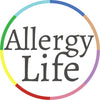Hypersensitivity type may be- Type IV Allergy
Immune reactions may be from- T Cells
Reactions may occur in- Over 24 Hours
Nickel metal is the most common cause of allergic contact dermatitis. A Nickel allergy is common with an estimated 8% of the population being allergic to nickel.
Since its discovery in 1751, Nickel has been a constant in our everyday life. People are often surprised by the amount of places where Nickel is commonly used and found, which include jewellery such as earrings, to the batteries in their cars to even dental crowns and some foods (Scroll below to see the some common places it can be found).
A Nickel allergy occurs when nickel particles penetrate the skin or is absorbed into the gastrointestinal tract leading to an allergic reaction.
How, when and where a person with a Nickel allergy may get a reaction may come down to their day-to-day lifestyle, activities and choices. For example what is around their workplace or school that has nickel, what they wear or accessorise with that has nickel, what nickel elements are on the people they spend time with or come in contact with, etc.

SYMPTOMS
A common form of contact dermatitis, a Nickel Allergy may be difficult to diagnose based on the contact, as it may impact all parts of the body.
Some of the symptoms may be characterised by:
- Itchy rash (most frequent symptom)
- Dry patches (can resemble a burn)
- Raised skin bumps/ swelling
- Hives
- Welts
- Blisters
- Lesions
- Persistent inflammatory response
The validity and severity of these symptoms are dependent on the individual and the level of exposure, as determined by a qualified health care provider.
TREATMENT
If you experience or are in the presence of someone who encounters a serious reaction (this may include difficulty breathing, wheezing, throat tightening, swelling, collapse, etc), follow their action plan or emergency instructions and call or have someone call Triple Zero (000) immediately.
Adrenaline (Epinephrine) is the first-line treatment for Anaphylaxis. After administering Adrenaline (Epinephrine), seek emergency medical attention by calling Triple Zero (000) for an ambulance.
If you are unsure what to do, call Triple Zero (000).
If you or someone you know is suspected of having an allergy, it’s important to discuss diagnosis, symptoms and treatment with a qualified health care provider to understand how to manage individual allergies and also to set up an Allergy Action Plan in the case of a reaction.
Always present your Allergy Card, Medical Alert Bracelet, Action Plan or Necklace to ensure health care providers, family members, friends, colleagues and others are aware of your Allergies.
TESTING
A patch test may be used to test for a Nickel Allergy.
LABELLING
Some labels or terms you may come across on Nickel Allergy friendly products:
"Nickel Free"

RANDOM NICKEL FACT
The name Nickel comes from a term used by German miners called Kupfernickel, meaning “Old Nick’s copper”.
WHERE YOU MAY COME ACROSS NICKEL
The below is not a complete list, but just some of the places, you may come across Nickel:
- Batteries
- Belt buckles
- Bra hooks
- Bracelets
- Brass fixtures
- Cell phones
- Cello strings
- Cigarette lighters
- Clasps
- Coins
- Chrome fixtures
- Costume jewellery
- Dental- Devices, Crowns, Bridges, etc
- Earrings
- Eye glass frames
- Fasteners
- Fitness Trackers
- Gold-especially white and yellow 10k and 14k
- Guitar strings
- Hair accessories- Hair pins
- Hand tools
- Hand bag clutches
- Jewellery- Heirloom jewellery
- Jean studs
- Keys
- Kitchen utensils and Knives
- Lipstick holders
- Metal buttons and snaps
- Metal items at work
- Musical instruments (keys, mouthpieces)
- Necklaces
- Pens
- Pocket knives
- Powder compacts
- Prostheses
- Razors
- Rings
- Scissors
- Suspender clips
- Swimwear
- Tablets
- Tuners
- Watches and bands
- Zippers
Some foods where Nickel may be present:
- Black tea
- Tree nuts
- Seeds
- Soy milk
- Chocolate
- Cocoa powders
- Some grains, including; oat, buckwheat, whole wheat, wheat germ, whole wheat pasta, multigrain breads and cereals
- Some vegetables including: asparagus, bean, broccoli, brussels sprouts, cauliflower, spinach
- Some legumes including; chickpeas, lentils, peas, peanuts, soy
- Some fruits including; bananas, pears
The information provided on Allergy Life Australia is to generally educate and inform you about living with allergies, intolerances and conditions, and is not intended as medical instruction or as a substitute for diagnosis, examination and advice by a qualified health care provider.




